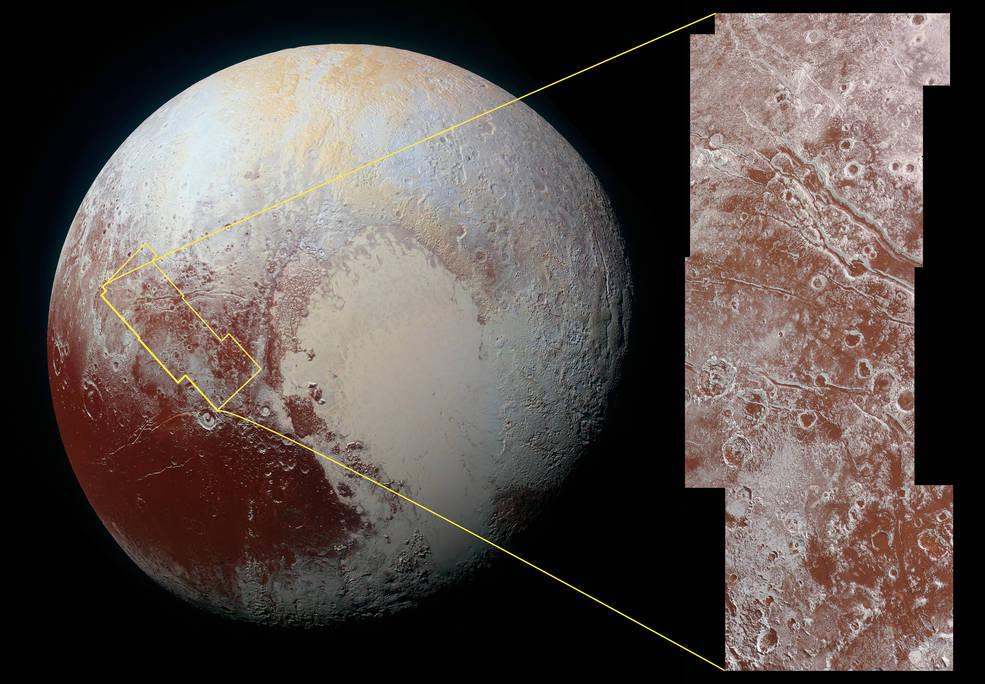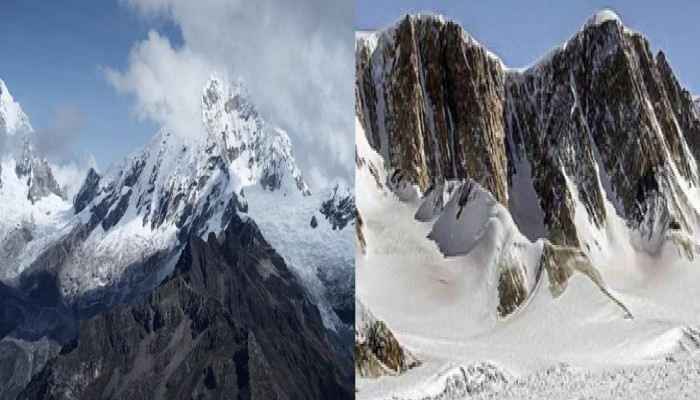NASA finds giant 'bite mark' on Pluto's surface
Sat 12 Mar 2016, 13:37:50

Scientists at the NASA's New Horizons mission have discovered what looks like a giant "bite mark" on Pluto's surface.
Researchers suggest it may have been caused by a process known as sublimation - the transition of a substance from a solid to a gas. The methane ice-rich surface on Pluto may be sublimating away into the atmosphere, exposing a layer of water-ice underneath, NASA said.
The image captured by NASA shows the cratered plateau uplands informally named Vega Terra, far in the western hemisphere of Pluto.
A jagged scarp, or wall of cliffs, known as Piri Rupes borders the young, nearly crater-free plains of Piri Planitia. The cliffs break up into isolated mesas in several places.
Cutting diagonally across the mottled plans is the long extensional fault of Inanna Fossa, which stretches eastward 600 kilometres from there to the western edge of the great nitrogen ice plains of Sputnik Planum.
Compositional data from the New Horizons spacecraft's Ralph/Linear Etalon Imaging Spectral Array (LEISA) instrument indicate that the plateau uplands south of Piri Rupes are rich in methane
ice.
ice.
Scientists speculate that sublimation of methane may be causing the plateau material to erode along the face of the cliffs, causing them to retreat south and leave the plains of Piri Planitia in their wake.
Compositional data also show that the surface of Piri Planitia is more enriched in water ice than the higher plateaus, which may indicate that Piri Planitia's surface is made of water ice bedrock, just beneath a layer of retreating methane ice. Because the surface of Pluto is so cold, the water ice is rock-like and immobile.
The light/dark mottled pattern of Piri Planitia in the left inset is reflected in the composition map, with the lighter areas corresponding to areas richer in methane – these may be remnants of methane that have not yet sublimated away entirely.
The image measures about 450 kilometres long by 410 kilometres wide. It was obtained by New Horizons at a range of about 33,900 kilometres from Pluto, about 45 minutes before the spacecraft's closest approach to Pluto on July 14 last year.
The LEISA data was gathered when the spacecraft was about 47,000 kilometres from Pluto.
No Comments For This Post, Be first to write a Comment.
Most viewed from International
Most viewed from World
AIMIM News
Latest Urdu News
Most Viewed
May 26, 2020
Do you think Canada-India relations will improve under New PM Mark Carney?
Latest Videos View All
Like Us
Home
About Us
Advertise With Us
All Polls
Epaper Archives
Privacy Policy
Contact Us
Download Etemaad App
© 2025 Etemaad Daily News, All Rights Reserved.

.jpg)









.jpg)
.jpg)
.jpg)
.jpg)
.jpg)
.jpg)
.jpg)
.jpg)
.jpg)
.jpg)
.jpg)
.jpg)
.jpg)
.jpg)

















